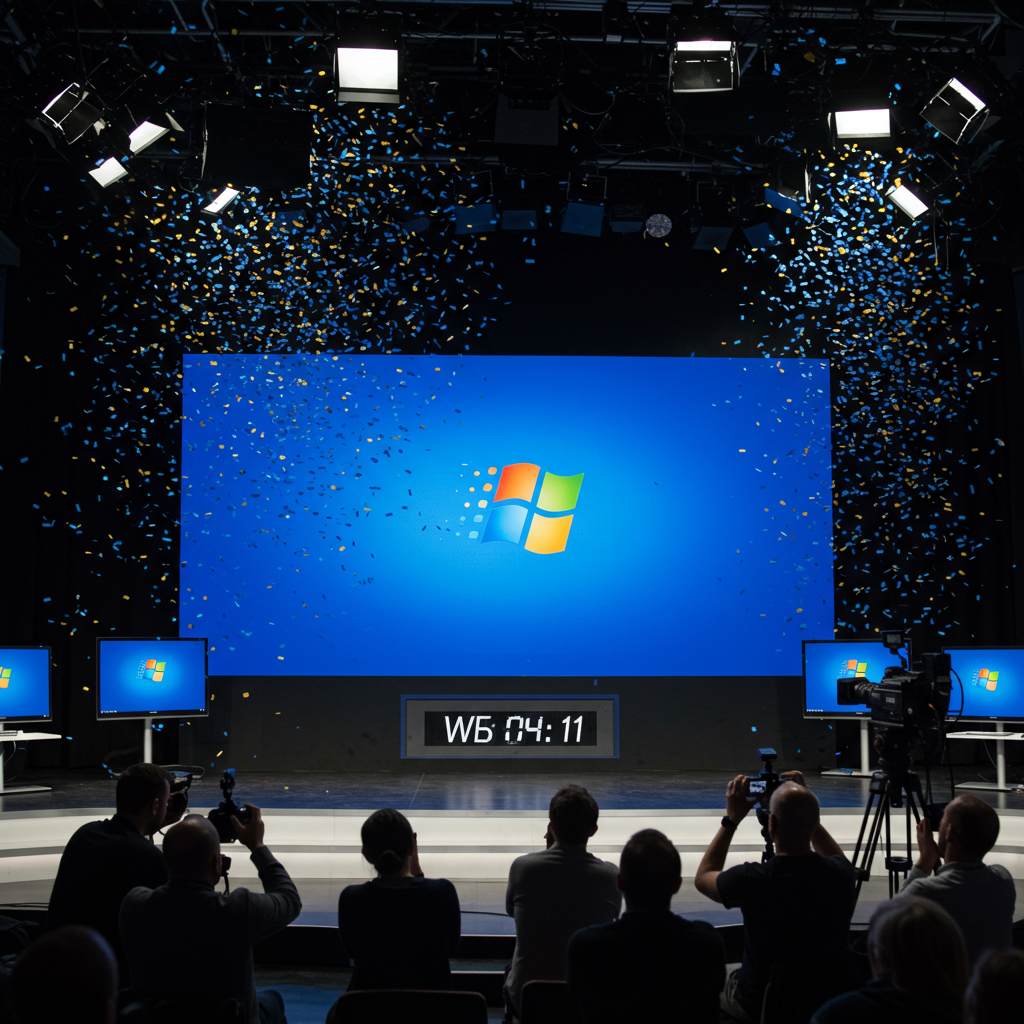Windows has been a cornerstone of computing for nearly 40 years, powering over a billion devices worldwide and constantly evolving to bring new experiences and capabilities. As technology advances, phasing out older operating systems is a natural part of this cycle, ensuring users benefit from the latest innovations and, critically, the strongest security.
For Windows 10 users, an important date is approaching: October 14, 2025. After this date, Microsoft will end support for Windows 10. This means your PC will no longer receive crucial software updates from Windows Update, including vital security patches and non-security updates. Technical assistance will also cease.
Why the End of Support Matters: Understanding the Risks
Continuing to use an unsupported operating system like Windows 10 after October 2025 is akin to leaving your digital front door wide open. Regular security updates are essential because they fix vulnerabilities that cybercriminals actively seek to exploit. Without these patches:
Increased Vulnerability: Your PC becomes significantly more susceptible to malware, viruses, and other cyber threats. Malware constantly evolves, targeting known weaknesses, and an unpatched system is an easy target.
Higher Risk of Cyberattacks: Outdated systems are an open invitation for attackers. Once compromised, sensitive personal data is at risk, devices can be infected with ransomware, or used as launching points for attacks on others.
Compliance Challenges: Businesses and organizations operating Windows 10 may struggle to maintain regulatory compliance standards, which often require supported and updated software.
Decreased App Functionality: While Microsoft 365 Apps will receive some security updates until October 2028, other applications designed for a continuously updated platform may experience reduced functionality or compatibility issues over time as the OS no longer receives feature updates.
To safeguard your data and maintain a secure computing experience, transitioning to a supported operating system before the October 2025 deadline is essential. Microsoft offers several paths forward, whether you’re a home user or managing devices for an organization.
Pathways to Stay Secure and Modern
Microsoft is committed to helping you navigate this transition smoothly. Here are the primary options available:
1. Upgrade Your Current PC to Windows 11 (If Eligible)
If your current Windows 10 PC meets the system requirements, the simplest path is often a free upgrade to Windows 11.
Check Eligibility: You can easily see if your PC qualifies by going to Settings > Update & Security > Windows Update or by using the PC Health Check app.
Benefits of Windows 11: Upgrading brings significant advantages beyond just continued support:
Enhanced Security: Windows 11 is designed with a “secure by default” baseline, leveraging hardware integration like the Trusted Platform Module (TPM 2.0) chip requirement. This provides hardware-based isolation, encryption, and advanced malware protection right out of the box, requiring less manual configuration. This “chip-to-cloud Zero Trust” approach creates robust layers of defense against sophisticated threats, leading to significantly fewer reported security incidents on Windows 11 PCs compared to Windows 10 devices. Features like Smart App Control proactively block untrusted applications.
Improved Performance: Windows 11 is designed for speed and efficiency, offering faster boot times, quicker wake from sleep, more responsive web browsing, and overall performance improvements. PCs running Windows 11 can be notably faster than Windows 10 devices.
Modern & Intuitive Experience: Enjoy a refreshed, streamlined user interface with familiar elements alongside powerful multitasking features like Snap Layouts and Virtual Desktops, making it easier to stay organized and productive.
Advanced Accessibility: Benefit from enhanced tools like Live Captions (real-time audio transcription, including translation on some devices), Voice Access (hands-free control), and improved Narrator voices.
Integrated AI: Experience Copilot directly in Windows 11, acting as a helpful AI assistant integrated into your daily tasks.
Prepare for Upgrade: Before upgrading, it’s crucial to back up your important files and settings. Windows Backup, built into Windows 10, makes it easy to safely transfer your data to your new OS. Consider cloud options like OneDrive or using an external hard drive.
2. Move to a New Windows 11 or Copilot+ PC
For many, especially those with older hardware, purchasing a new PC is the best option to experience the full potential of Windows 11 and future innovations.
Latest Hardware: New devices come with the most current processors, memory, and features, providing optimal performance and longevity.
Copilot+ PCs: This new class of Windows 11 PCs is specifically designed with powerful Neural Processing Units (NPUs) to unlock exclusive AI experiences directly on the device. These PCs are incredibly fast and efficient, offering features like Recall (searching past activity naturally), Click to Do (contextual AI tools), and advanced creative capabilities in apps like Paint and Photos. These devices are built to handle demanding tasks, multitasking, and AI workloads seamlessly, often with exceptional battery life.
Wide Selection: A diverse range of Windows 11 and Copilot+ PCs is available from leading partners like Acer, ASUS, Dell, HP, Lenovo, Samsung, and Surface, offering options tailored for mobility, performance, creativity, and business needs.
Responsible Disposal: When moving to a new PC, securely erase all data from your old device before recycling or trading it in. Many partners and retailers offer trade-in and recycling programs.
3. Transition to Windows 365 (Cloud PC)
Organizations looking for a flexible and secure transition may find Windows 365 ideal.
Cloud-Based Solution: Deliver a secure Windows 11 experience to any device via a Cloud PC, offering employees access from almost anywhere.
Efficiency & Security: Provides a cost-effective, sustainable alternative to immediate hardware replacement while enhancing security and simplifying IT management.
Seamless Experience: Employees get a consistent, secure Windows 11 desktop in the cloud.
4. Utilize the Extended Security Updates (ESU) Program (A Temporary Bridge)
Microsoft understands that upgrading takes time. The Windows 10 Extended Security Updates (ESU) program is available to provide critical and important monthly security updates after the October 14, 2025, end-of-support date.
Temporary Measure: ESU is designed as a short-term bridge, not a permanent solution. It does not include new features, non-security updates, design changes, or technical support.
Options:
Individuals: For the first time, personal Windows 10 users can enroll. Options include using Windows Backup for free enrollment, redeeming Microsoft Rewards points for free enrollment, or paying an annual fee ($30 USD for the first year). An enrollment wizard will roll out starting in July 2025.
Commercial Organizations: Can subscribe annually per device ($61 USD for the first year, increasing each year) via Volume Licensing or Cloud Service Providers.
Cloud/Virtual Environments: Windows 10 devices accessing Windows 11 Cloud PCs through Windows 365 or Virtual Machines are entitled to ESU at no additional cost and receive updates automatically.
The ESU program helps maintain a baseline of security during your transition planning, but the recommended path for long-term security, performance, and access to innovation is moving to a supported Windows 11 environment.
Prepare Your PC Today
The October 14, 2025, deadline for Windows 10 end of support is approaching. Acting now ensures you have ample time to evaluate your options and make the move that’s right for you or your organization.
Start by checking if your current Windows 10 PC is eligible for a free Windows 11 upgrade. Regardless of your path, prioritize backing up your data to protect your valuable files and memories. Whether you choose to upgrade, purchase a new device, leverage cloud solutions, or use ESU as a bridge, Microsoft is here to support your journey to a more secure and modern computing experience with Windows 11, Copilot+ PCs, and Windows 365.




